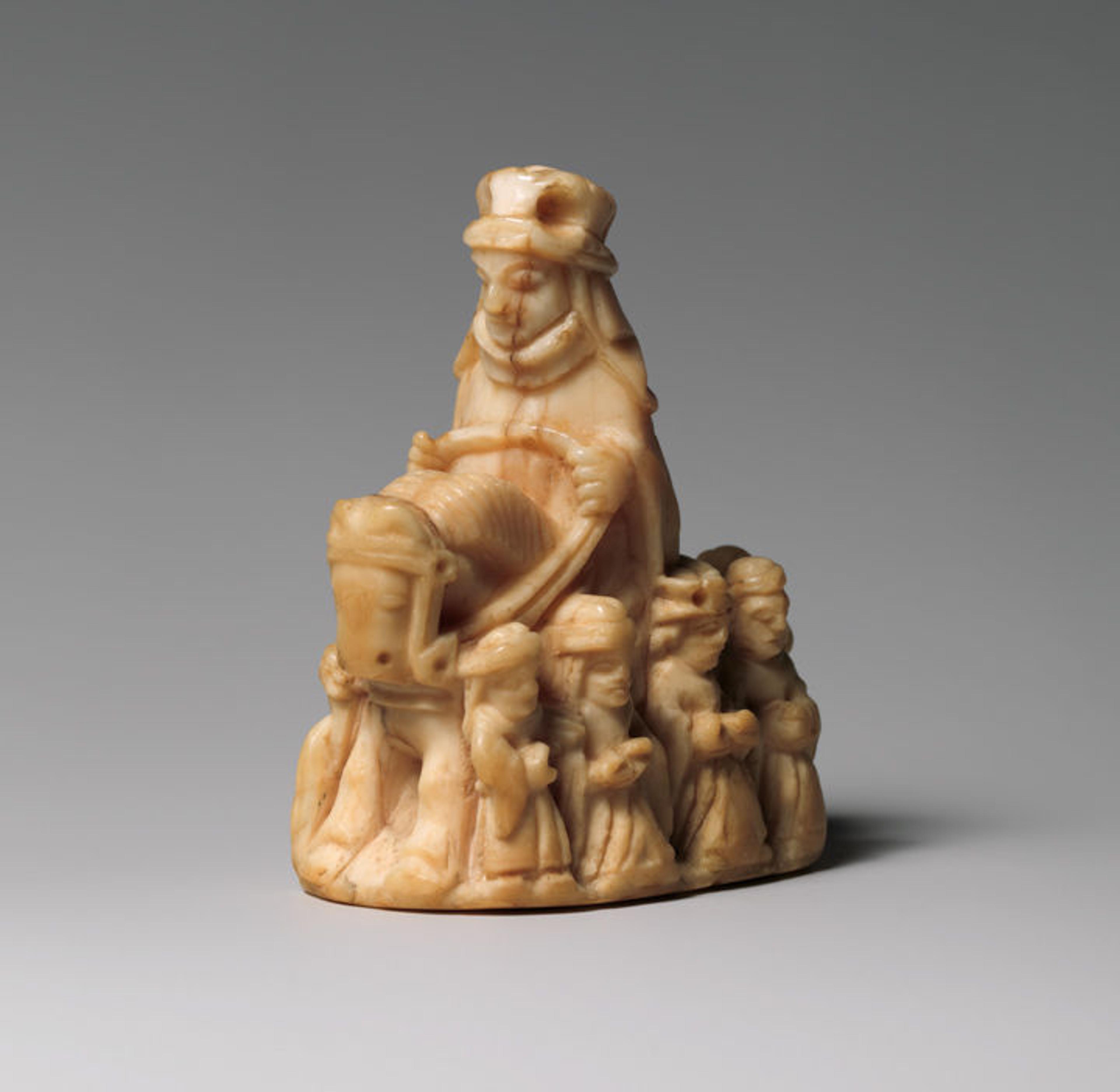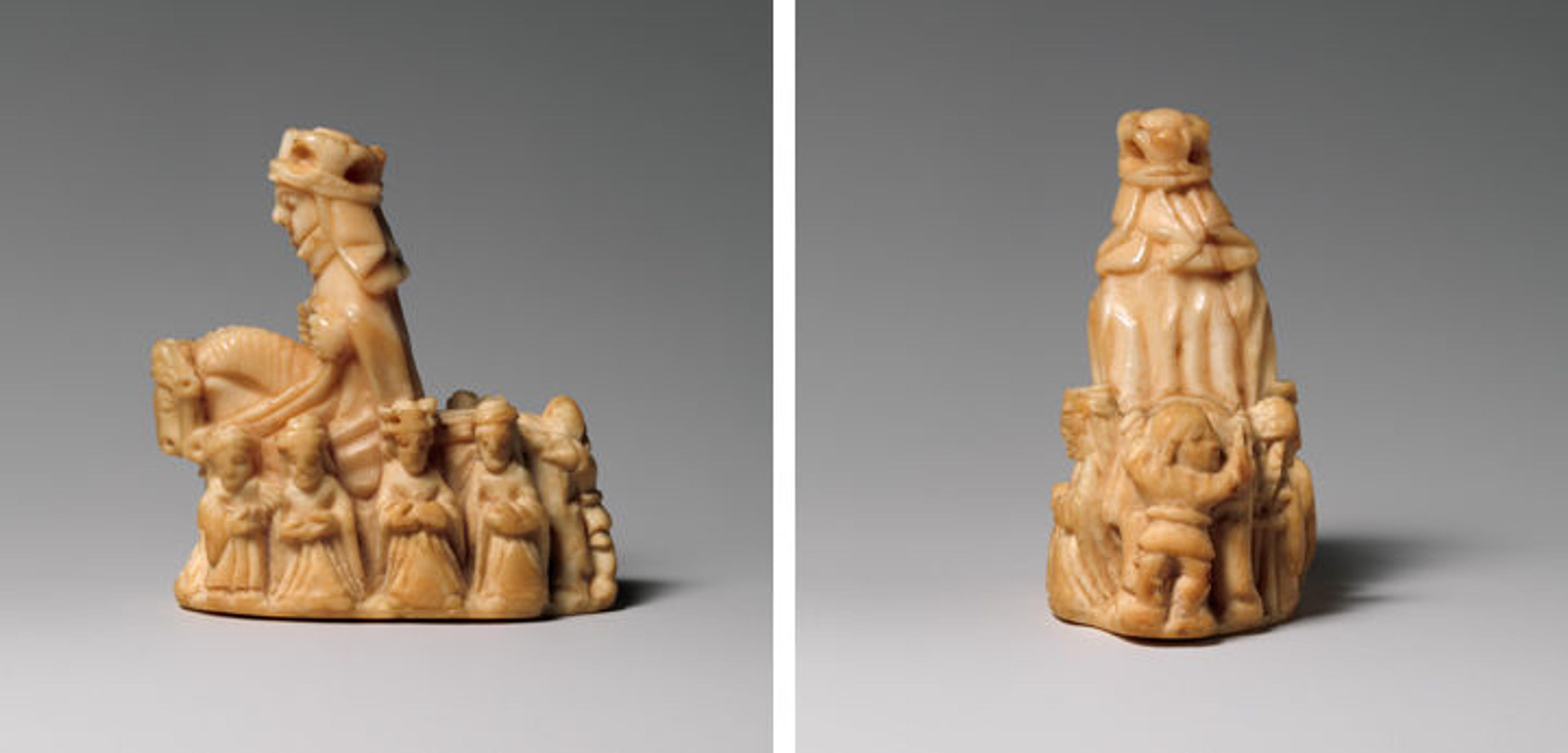The Chessboard and the "Times That Are or Could Be"

Chess piece in the form of a queen, 13th century. Scandinavian. Whale ivory, Overall: 2 5/8 x 2 3/8 x 1 7/16 in. (6.7 x 6.1 x 3.6 cm). The Metropolitan Museum of Art, New York, Pfeiffer Fund, 2012 (2012.346)
«According to Alfonso X the Wise's 1283 Book of Games, chess "resembles the things that happened according to the times that were, are or could be. . ." It should be no surprise, therefore, that in the hands of medieval artists chess pieces were infused with life. Among these, the most remarkable, by far, is the chess queen. For their chess matches, medieval Europeans surprisingly replaced the vizier—the traditional male adviser to the king long known in Persian and Islamic tradition—with a queen. Conceived in the traditional hierarchical society of medieval Europe, the chess queen would gradually emerge as the most powerful piece on the chessboard.»
In medieval literature, the queen appears at the side of the king in the earliest European reference to chess, the Einsiedeln Poem I (from about 1000), as well as in the early discussions of chess in English scholar Alexander Neckham's (1157–1217) De Naturis Rerum and in the 12th-century "Winchester Poem." Regrettably, medieval chess queens are among the rarest pieces to come to the United States. Only two are in American museums: a queen on horseback at The Met and an earlier example at the Walters Art Museum.
The Walters' queen conforms to the nonfigural shape used for both the king and vizier of Islamic chessboards; yet here the head of a queen emerges from the middle of the piece. Like a Formula One driver peeking out of a race car, she is clearly eager for whatever challenge awaits her on the road ahead.

Chess piece of a queen, 12th century (Medieval). Spain. Walrus ivory, H: 2 3/4 x W: 1 3/4 x D: 2 11/16 in. (7.1 x 4.4 x 6.8 cm). Count Auguste de Bastard, Paris [date and mode of acquisition unknown]; Henri Daguerre, Paris [date and mode of acquisition unknown]; Henry Walters, Baltimore, 1926, by purchase; Walters Art Museum, 1931, by bequest (71.145)
The Met's queen sits astride her horse, leaning slightly forward and clasping the reins in her hand. She wears a veil and a high crown. There is an attentive eagerness in the stance of The Met's queen, and the press of the entourage gathered around her steed conveys a sense of frenzy. This is not a royal army but a curious group. One figure, like her, bears a crown. Some appear to seek the aid of the queen, who, as a good ruler, is charged with taking care of the needy. One such figure, precariously situated at the horse's rear, holds on for dear life. Only the player whose queen this was would see him, as we do. Clearly he and those who gather around have cast their lots with her.

Side and back views of The Met's queen chess piece
For both the medieval chess player and the artist, the time had come to let a woman take the reins.
Barbara Boehm
Barbara Drake Boehm is the Paul and Jill Ruddock Senior Curator for The Met Cloisters in the Department of Medieval Art and The Cloisters.